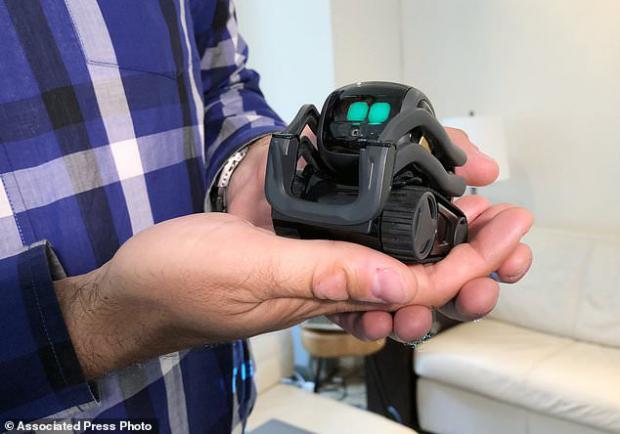
Breaking News
 Silver up over $2.26... Today! $71.24 (and Gold close to $4500)
Silver up over $2.26... Today! $71.24 (and Gold close to $4500)
 GARLAND FAVORITO: More and more fraud from the 2020 election in Fulton County, Georgia...
GARLAND FAVORITO: More and more fraud from the 2020 election in Fulton County, Georgia...
 Rep. Matt Gaetz tells Tucker Carlson that agents of the Israeli govt tried to blackmail his...
Rep. Matt Gaetz tells Tucker Carlson that agents of the Israeli govt tried to blackmail his...
 Trump: We need Greenland for national security… you have Russian and Chinese ships all over...
Trump: We need Greenland for national security… you have Russian and Chinese ships all over...
Top Tech News
 Travel gadget promises to dry and iron your clothes – totally hands-free
Travel gadget promises to dry and iron your clothes – totally hands-free
 Perfect Aircrete, Kitchen Ingredients.
Perfect Aircrete, Kitchen Ingredients.
 Futuristic pixel-raising display lets you feel what's onscreen
Futuristic pixel-raising display lets you feel what's onscreen
 Cutting-Edge Facility Generates Pure Water and Hydrogen Fuel from Seawater for Mere Pennies
Cutting-Edge Facility Generates Pure Water and Hydrogen Fuel from Seawater for Mere Pennies
 This tiny dev board is packed with features for ambitious makers
This tiny dev board is packed with features for ambitious makers
 Scientists Discover Gel to Regrow Tooth Enamel
Scientists Discover Gel to Regrow Tooth Enamel
 Vitamin C and Dandelion Root Killing Cancer Cells -- as Former CDC Director Calls for COVID-19...
Vitamin C and Dandelion Root Killing Cancer Cells -- as Former CDC Director Calls for COVID-19...
 Galactic Brain: US firm plans space-based data centers, power grid to challenge China
Galactic Brain: US firm plans space-based data centers, power grid to challenge China
 A microbial cleanup for glyphosate just earned a patent. Here's why that matters
A microbial cleanup for glyphosate just earned a patent. Here's why that matters
 Japan Breaks Internet Speed Record with 5 Million Times Faster Data Transfer
Japan Breaks Internet Speed Record with 5 Million Times Faster Data Transfer
Personalised AI-powered robots are getting more sociable...

It's taken decades of research to build robots even a fraction as sophisticated as those featured in popular science fiction.
They don't much resemble their fictional predecessors; they mostly don't walk, only sometimes roll and often lack limbs.
And they're nowhere close to matching the language, social skills and physical dexterity of people.
Worse, they're so far losing out to immobile smart speakers made by Amazon, Apple and Google, which cost a fraction of what early social robots do, and which are powered by artificial-intelligence systems that leave many robots' limited abilities in the dust.
That hasn't stopped ambitious robot-makers from launching life-like robots into the market - albeit with mixed results so far.
Two pioneers in a new vanguard of cute, sociable robots - Jibo, a curvy talking speaker, and Kuri, a cartoonish wheeled 'nanny' - have been early casualties. The makers of Vector, a less expensive home robot that was unveiled Wednesday, hope theirs will be a bigger hit.
Still others, including a rumoured Amazon project and robots designed to provide companionship for senior citizens, remain in the development phase.



